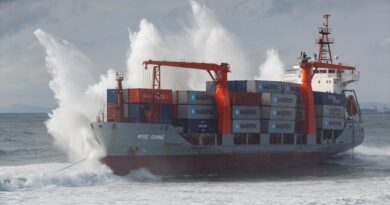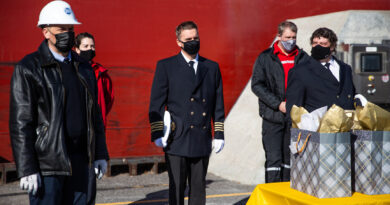Ocean Carrier’s Spending Wish List 2021
In the wake of 2000% profit for some carriers, I think it is time for a wish list.
Recent article via GCaptain talking about CMA CGM 1st quarter profit
As consumers, whether an NVOCC (non vessel operating common carrier) or a BCO (business cargo owner), a few things that carriers could spend the cash on.
- Web portal upgrades. The top ten carriers have pretty decent websites that allow quotes that convert to bookings. Some are quite poor in user friendliness with not much to offer including vague tracking.
- Phone customer service. Wait times seem to have improved as more customer service reps are hired for assistance in anything you can throw at them from diversions to pc count issues, customs clearance issues etc. There is always room for improvement. Ramped up training of these reps could be a game changer.
- Data interaction with rail lines. This one is tricky as it also includes secondary parties like the rail. However, the intermodal volume moving on USA rail systems should have ocean carriers as a rail billed partner looking for efficiencies at every leg of the supply chain. Being able to see that my inbound container is in Montana would help tremendously without the need to track on multiple platforms.
- Empty visibility. Being inland USA (Minnesota) we rely on IPI (Inland Point Intermodal) service and have no visibility of the incoming imports that could “street-turn” and be used for outbound. Sure, your dray agent might be able to help on this. But wouldn’t it be nice to look on the carrier website to have a depot status “20 x 40ft HQ in inventory”? The carriers already have this info. Please share.
- Fulfillment of contracts. In 2021 it appears that every carrier is oversold. Perhaps a better record of contract estimated MQC could solve the issue. I would think that the vessel capacity and port capacity formulas could interline along with the route schedules to manage such data. For example; If a carrier sells say 85% by contract and allows for 15% FAK non- contract (or whatever that magic number is) to accommodate “just-in-time shipping”, maybe they would sell what they need to fill vessels to near capacity. They did manage the drop when COVID 19 hit by blank sailing. A five vessel rotation dropping to 75% capacity afforded blank sailing one vessel to push the remaining four vessels to 94%. It should work in reverse to ramp up any growth. And yes, a 31% increase or more is a hard growth pattern to manage…but alas, part of the increase in revenue is being spent on orders of new ships and containers (including specialty like reefer).
- More Sales Reps. A carrier is only as strong as their sales team. Easy access to my favorite carrier’s reps is the difference in winning or losing a bid. Company XYZ wants a quote for 500 containers. I can’t wait for a response if it is a trade-lane out of contract (which gets added with won business by amendment). An NVOCC or BCO needs quick service at times!
- Quality Equipment. With extra cash, perhaps carriers could reassess the inventory of existing equipment. Most are in good shape. Others are beat up, rusty and past their wear and tear lifetime. We know there are standards for seaworthiness. The Container Safety Convention along with examiners give validities for containers on a range of three months to five years. Further checks on quality could be noted amongst the carrier appointed empty depots with a little spending to cover the labor. Moving grains, the dray drivers wouldn’t be forced to do a sniff test to ensure there isn’t a strong odor from something shipped previously like oil from a machine, etc. Floor checks for damage is the most often hidden structural flaw I have seen. It might look good from the top, but stress below can cause a forklift to fall through.
These are my personal wish-list items and I am sure I will think of something else after I hit send or missed something that someone else would like to see. Feel free to share your wish-list items on LinkedIn.




